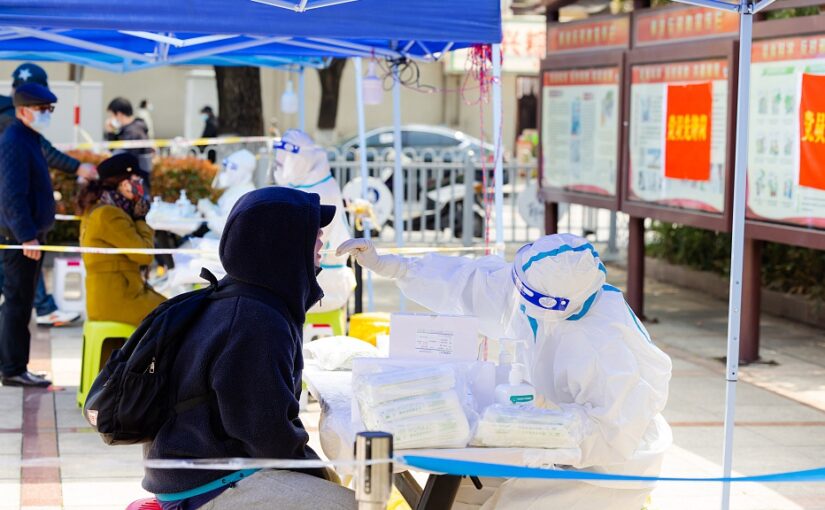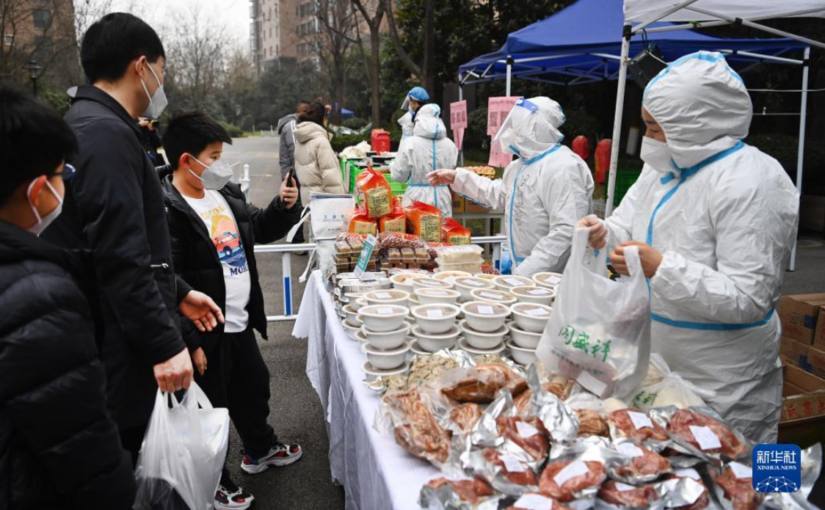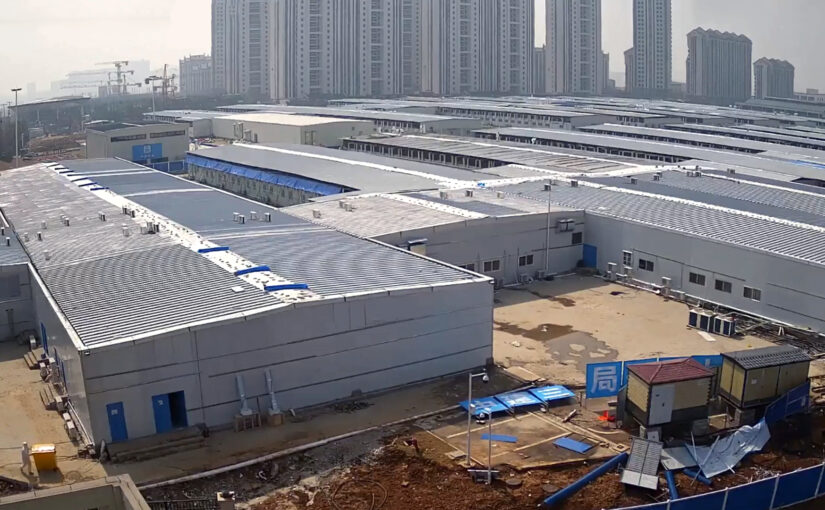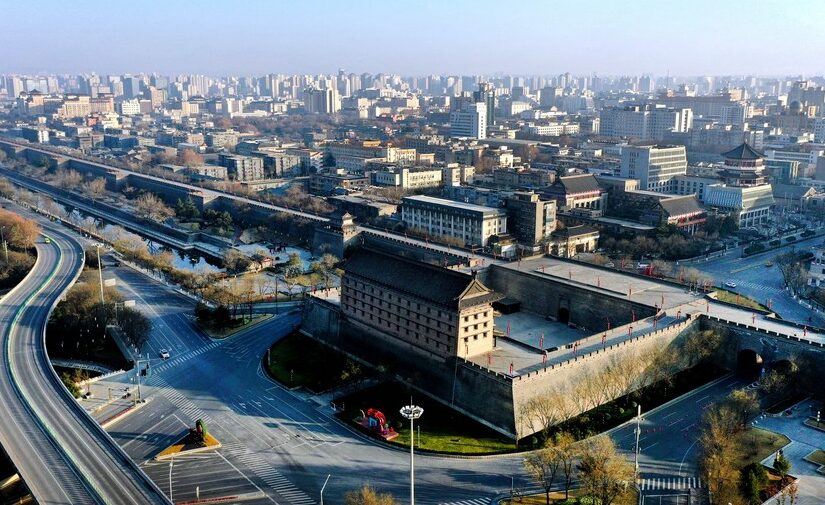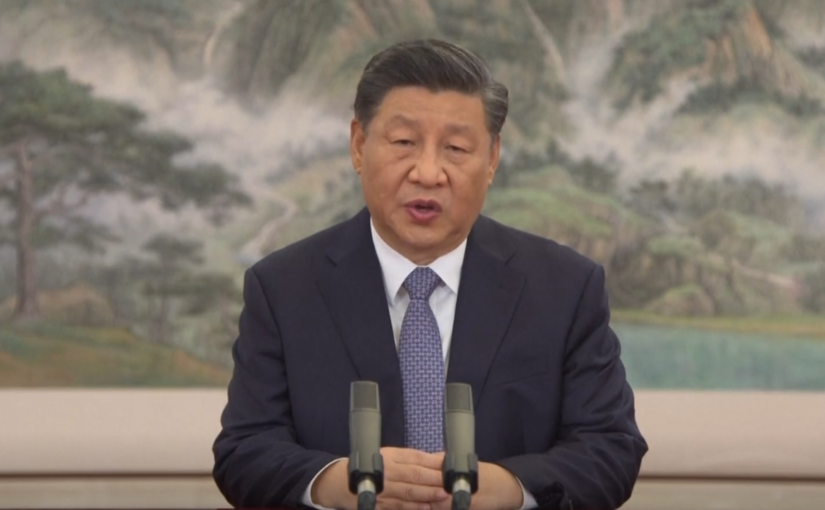This article from Danny Haiphong, first published in CGTN, discusses key recent developments in the Covid pandemic, including the emergence of the Omicron variant and the announcement of a lockdown in the Chinese city of Xi’an. Danny notes that China’s strategy of early detection, mass testing, quarantine and properly-supported lockdowns continues to represent a model of a people-first approach to managing the pandemic.
The Omicron variant represents another troubling chapter in the COVID-19 pandemic. Countless travel plans have been canceled as scientists and infectious disease experts attempt to gain a greater understanding of the latest variant. In the United States, shortages in tests and healthcare workers have placed immediate strains on society. Forecasts for global economic growth have become less optimistic.
Bloomberg magazine, a U.S. media outlet known for its anti-China bias, recently admitted that China’s “dynamic zero-COVID” policy has been an effective measure against the pandemic. The report stated that China’s average daily COVID-19 cases would rise to 637,155 if the country adopted a U.S.-style approach to the pandemic. Bloomberg quickly changed the subject to more anti-China talking points and avoided any elaboration on the factors for China’s success against COVID-19.
Bloomberg repeated a trend in U.S. media which either ignores the success of the “dynamic zero-COVID” policy or calls it “authoritarian.” This has come at a great cost to the people of the United States and Western countries, who have suffered the worst consequences of the pandemic. Yet the U.S. and Western media have taken part in endless speculation about China’s policy to deflect from the failed COVID-19 responses of their own nations.
The truth is that China has by far been the most successful in protecting human life over the course of the pandemic. China has experienced three deaths per million in the population from COVID-19. The United States, which leads the world in the total number of COVID-19 cases and deaths to the pandemic, averages more than 2,400 deaths per million in the population.
U.S. and Western media have claimed China’s policy cannot be emulated in so-called free and democratic societies. China is accused of irrationally attempting to prevent transmission entirely, the costs of which are too high for Western societies that prioritize the economy over the health of the public.
This is problematic for several reasons. First, China’s strategy does not seek to eliminate transmission entirely but rather to reduce the human and economic costs of the pandemic as quickly and effectively as possible.
Second, the depiction of China’s “dynamic zero-COVID” policy as “irrational” and detrimental to the economy ignores the fact that Western economies have experienced the harshest economic fallout from the pandemic. U.S. economic growth had only begun to catch up to a 2 percent GDP year-on-year average growth in recent months before Omicron reignited economic uncertainty. China was the fastest major economy to achieve growth amid the pandemic and, according to World Bank estimates, is set to grow at two to three times the rate of the United States in 2022. Clearly, China’s “dynamic zero-COVID” policy has taken economic development into account from the very beginning.
Perhaps the most troubling aspect of the U.S. and Western rejection of China’s “dynamic zero-COVID” policy is that it reflects how effectively misinformation has spread within societies that have adopted a wrongheaded, anti-China political agenda. The United States, for example, was wracked with such high levels of distrust in both the government and healthcare system that an “infodemic” took hold very early on in the pandemic. Former President Donald Trump only aided in spreading misinformation about the pandemic by blaming China for the U.S.’s woes and frequently employing the term “China virus” during his briefs to the country. Current President Joe Biden has done little to increase confidence in the U.S.’s capacity to protect human life beyond a change in rhetoric.
Misinformation has only worsened social fractures in the U.S. and West and weakened already threadbare public health systems. Under such circumstances, China’s “dynamic zero-COVID” policy remains an important model for the world. China’s policy focuses on rapidly addressing outbreaks and establishing long-term strategies for pandemic control and containment. The policy is currently being employed in the city Xi’an, which was placed under lockdown as of December 23 following an outbreak of the Delta variant. Residents have undergone several rounds of mass testing, schools have closed, and local authorities have coordinated with all sectors of society to ensure people have their basic needs met.
China’s “dynamic zero-COVID” policy has been a consistent example of a people-first approach to the pandemic amid a period of global uncertainty. According to chief epidemiologist at China’s Center for Disease Control and Prevention Wu Zunyou, the policy has protected 950,000 Chinese lives over the course of the pandemic. This is nothing short of a miracle. U.S. and Western observers would thus benefit from taking an unbiased view of China’s “dynamic zero-COVID” approach rather than the politicized orientation that has been adopted by the media and political establishment.

